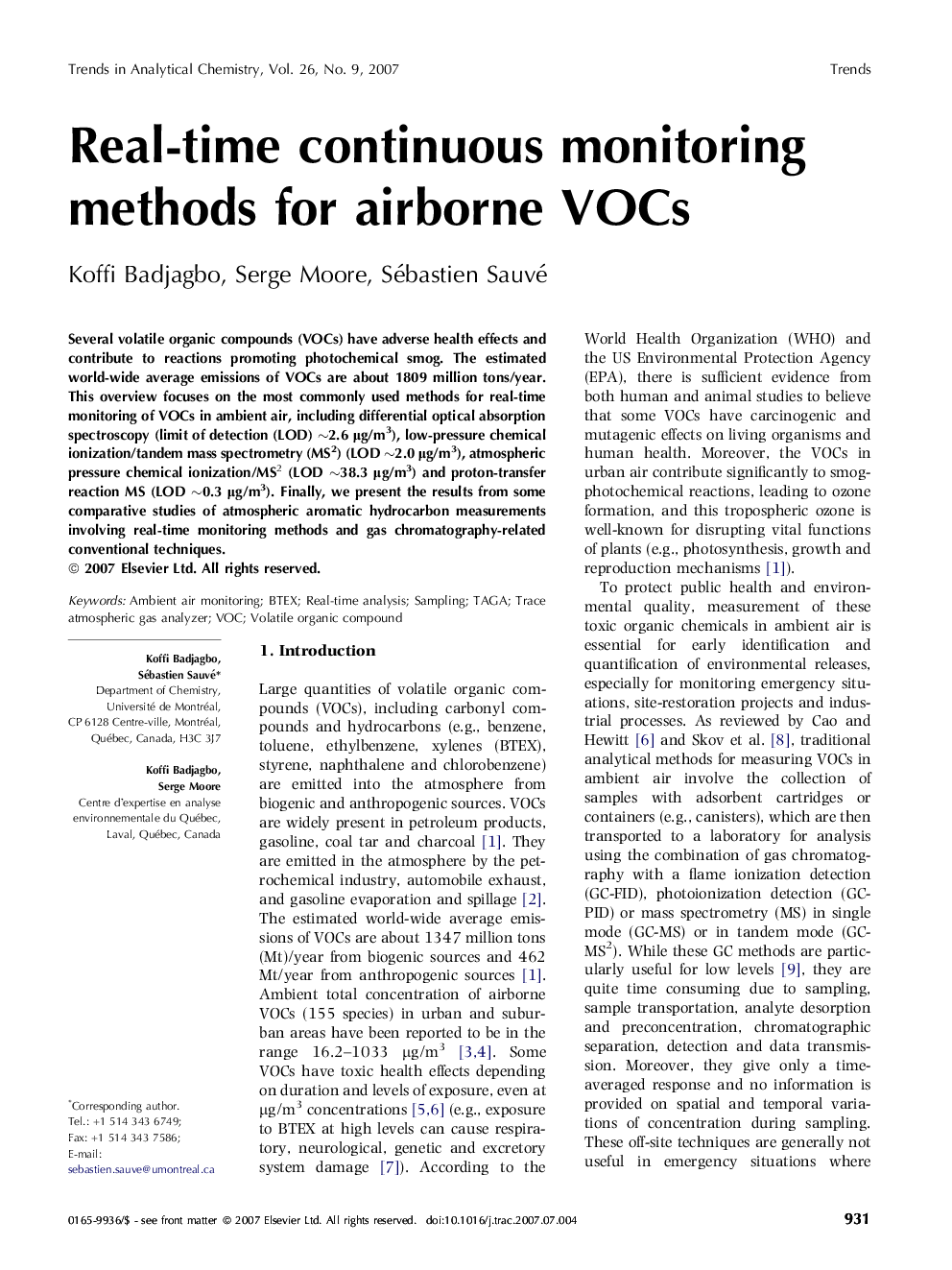| Article ID | Journal | Published Year | Pages | File Type |
|---|---|---|---|---|
| 1248566 | TrAC Trends in Analytical Chemistry | 2007 | 10 Pages |
Several volatile organic compounds (VOCs) have adverse health effects and contribute to reactions promoting photochemical smog. The estimated world-wide average emissions of VOCs are about 1809 million tons/year. This overview focuses on the most commonly used methods for real-time monitoring of VOCs in ambient air, including differential optical absorption spectroscopy (limit of detection (LOD) ∼2.6 μg/m3), low-pressure chemical ionization/tandem mass spectrometry (MS2) (LOD ∼2.0 μg/m3), atmospheric pressure chemical ionization/MS2 (LOD ∼38.3 μg/m3) and proton-transfer reaction MS (LOD ∼0.3 μg/m3). Finally, we present the results from some comparative studies of atmospheric aromatic hydrocarbon measurements involving real-time monitoring methods and gas chromatography-related conventional techniques.
